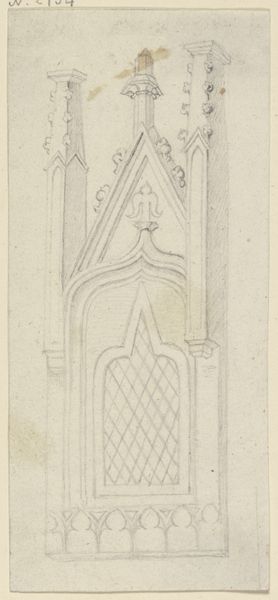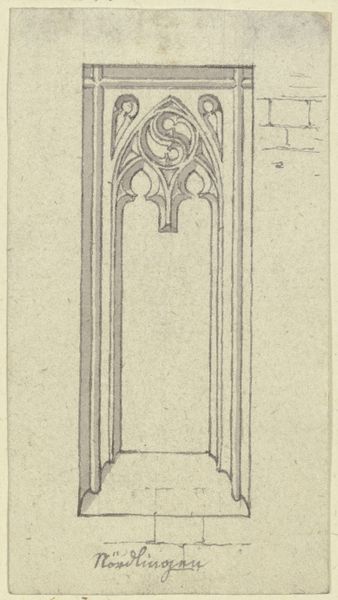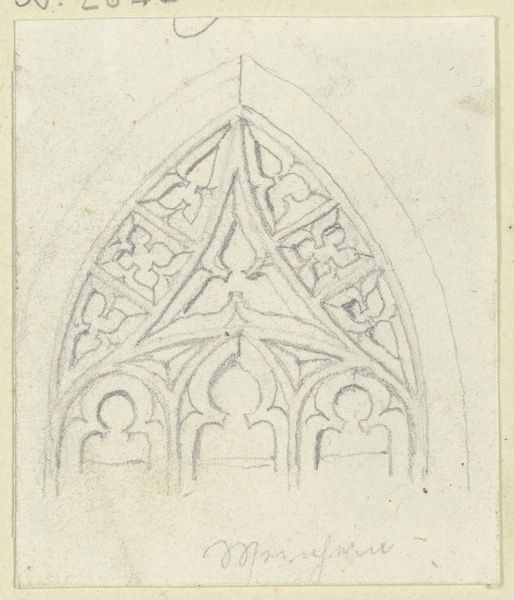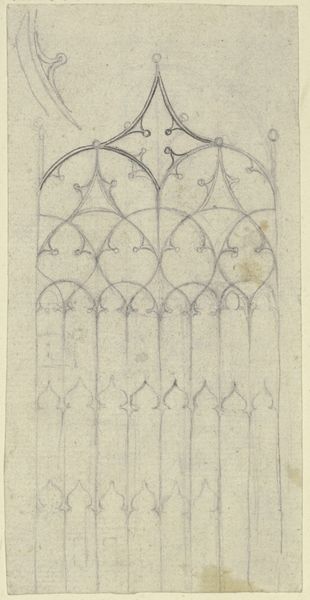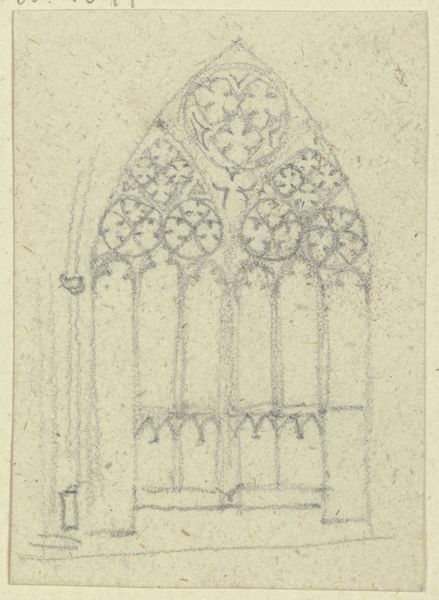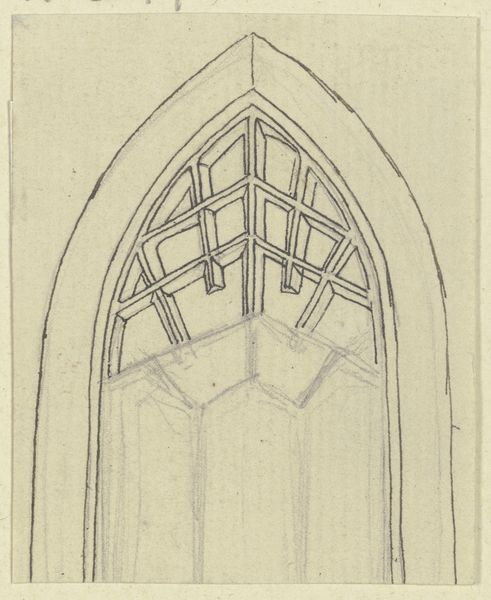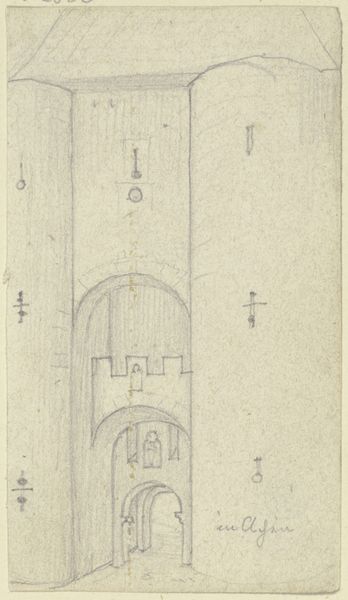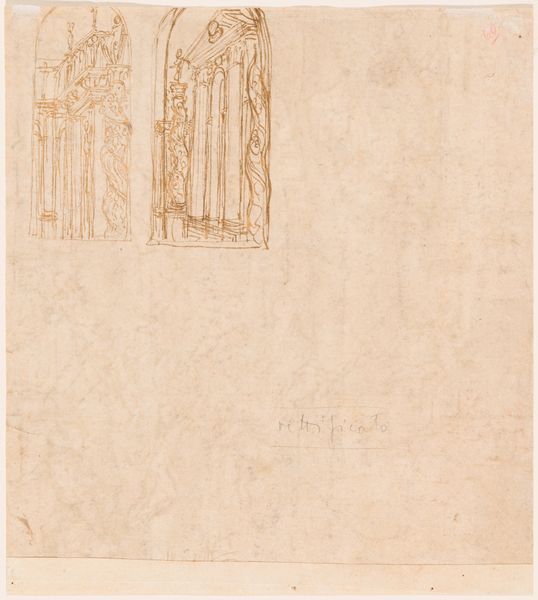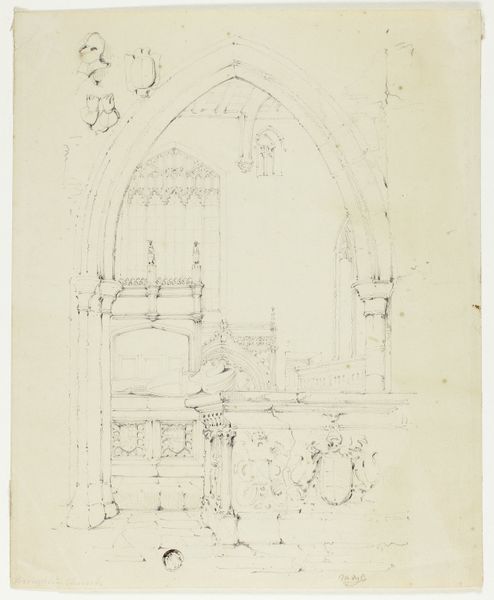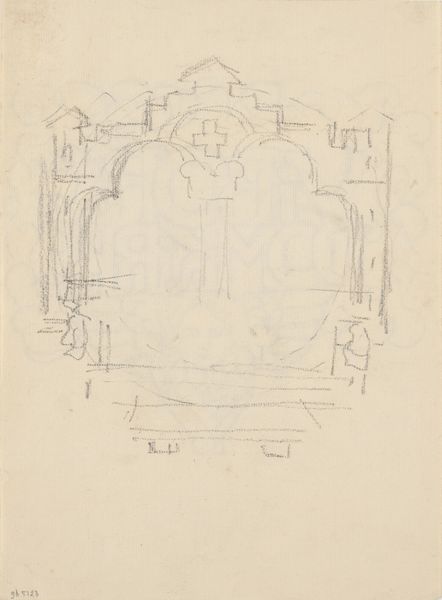
drawing, paper, architecture
#
drawing
#
paper
#
form
#
geometric
#
line
#
architecture
Copyright: Public Domain
Curator: Before us is Karl Ballenberger's "Gothic Portal," a drawing residing here at the Städel Museum. It presents an architectural study, focused intently on form. Editor: Immediately, I'm struck by the delicacy of line. It’s almost ephemeral, like a ghostly imprint of monumental architecture rendered with quiet reverence using paper and drawing tools. Curator: Exactly. Let’s consider how the artist's focus isn't necessarily on capturing a specific structure, but on exploring geometric principles of Gothic design and spatial configurations that defined much of religious ideology at the time. The very notion of height was an expression of the Divine's domain. Editor: I see that clearly in the repeated arches, drawing the eye upward to where the structure almost fades at the very top. We can’t forget that drawings like this weren't always simply sketches. They are crucial documents of labor. Did Ballenberger consider how craft shapes identity? How architectural choices themselves reinforced gender or class distinctions in the communities for which such monuments were conceived? Curator: An incisive observation. These portals mediated access, reinforcing social hierarchies and regulating the flow of bodies and ideas within a structured religious context. This portal as depicted here could very well underscore access or a barrier according to religious laws. Editor: Thinking about the physical act of drawing, too, interests me here. The paper, the artist's hand. Even if the drawing remains detached, as a historical fragment, its presence raises vital questions about labor—Ballenberger's, certainly, but also that of the stonemasons who labored in precarity for such heights of artistic and social dominance. Curator: I agree, it prompts consideration of these artisans' contributions—often sidelined or deemed 'anonymous.' Re-evaluating historical accounts using this sketch urges an approach towards the agency and identity-building of said laborers as stakeholders through acts of material production. Editor: This architectural detail reveals not just geometric structures or an aesthetic system, but an entire ecology of making—social, material, historical, with all the uneven distributions of power at play. It asks how meaning itself accrues via the combined efforts of making and the act of representation. Curator: Indeed, our analysis encourages us to understand the artwork, its creator and subsequent beholders as complex players who contribute to societal discourse surrounding not just religion, but every possible identity marker connected therein. Editor: And for me, reflecting on the materials and the process grounds those complexities—revealing Gothic ambition as profoundly shaped by earthly conditions of labor, as we see translated in line and architectural shape within this subtle study.
Comments
No comments
Be the first to comment and join the conversation on the ultimate creative platform.
